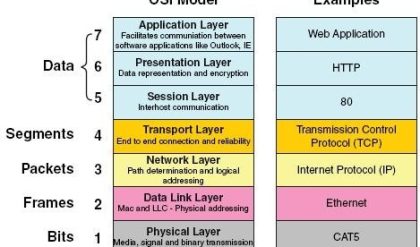Media Access Control (MAC) Layer 2 Sublayer
This topic provides an introduction to the MAC sublayer of the data link layer (Layer 2).
In Layer 2 of a network, the Media Access Control (MAC) sublayer provides addressing and channel access control mechanisms that enable several terminals or network nodes to communicate in a network.
The MAC sublayer acts as an interface between the logical link control (LLC) Ethernet sublayer and Layer 1 (the physical layer). The MAC sublayer emulates a full-duplex logical communication channel in a multipoint network. This channel may provide unicast, multicast, or broadcast communication service. The MAC sublayer uses MAC protocols to prevent collisions.
In Layer 2, multiple devices on the same physical link can uniquely identify one another at the data link layer, by using the MAC addresses that are assigned to all ports on a switch. A MAC algorithm accepts as input a secret key and an arbitrary-length message to be authenticated, and outputs a MAC address.
A MAC address is a 12-digit hexadecimal number (48 bits in long). MAC addresses are usually written in one of these formats:
· MM:MM:MM:SS:SS:SS
· MM-MM-MM-SS-SS-SS
The first half of a MAC address contains the ID number of the adapter manufacturer. These IDs are regulated by an Internet standards body. The second half of a MAC address represents the serial number assigned to the adapter by the manufacturer.
Contrast MAC addressing, which works at Layer 2, with IP addressing, which runs at Layer 3 (networking and routing). One way to remember the difference is that the MAC addresses apply to a physical or virtual node, whereas IP addresses apply to the software implementation of that node. MAC addresses are typically fixed on a per-node basis, whereas IP addresses change when the node moves from one part of the network to another.
IP networks maintain a mapping between the IP and MAC addresses of a node using the Address Resolution Protocol (ARP) table. DHCP also typically uses MAC addresses when assigning IP addresses to nodes.
Understanding MAC Address Assignment on an EX Series Switch
This topic describes MAC address assignment for interfaces on standalone Juniper Networks EX Series Ethernet Switches. For information regarding MAC address assignments in a Virtual Chassis, see Understanding MAC Address Assignment on a Virtual Chassis.
MAC addresses are used to identify network devices at Layer 2. Because all Layer 2 traffic decisions are based on an interface’s MAC address, understanding MAC address assignment is important to understanding how network traffic is forwarded and received by the switch. For additional information on how a network uses MAC addresses to forward and receive traffic, see Understanding Bridging and VLANs on Switches.
A MAC address comprises six groups of two hexadecimal digits, with each group separated from the next group by a colon—for instance, aa:bb:cc:dd:ee:00. The first five groups of hexadecimal digits are derived from the switch and are the same for all interfaces on the switch.
The assignment of a unique MAC address to each network interface helps ensure that functions that require MAC address differentiation—such as redundant trunk groups (RTGs), Link Aggregation Control Protocol (LACP), and general monitoring functions—can properly function.
On switches that use line cards, this MAC addressing scheme differentiates the Layer 2 interfaces on different line cards in the switch.
For EX Series switches, the first five groups of hexadecimal digits are determined when the switch is manufactured. The switch then assigns a unique MAC address to each interface by assigning a unique identifier as the last group of hexadecimal digits. The assignment depends on how the interface is configured. The switch uses a different pattern to distinguish between an interface that is configured as any of a routed VLAN interface (RVI), a virtual management Ethernet (VME) interface, or an aggregated Ethernet interface or is not configured as any of an RVI, a VME, or as an aggregated Ethernet interface.
For aggregated Ethernet interfaces, the MAC address assignment remains constant regardless of whether the configuration of the interface is Layer 2 or Layer 3.





